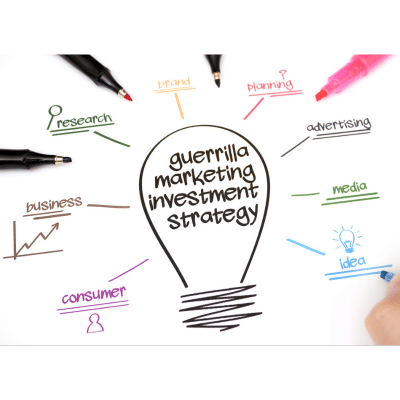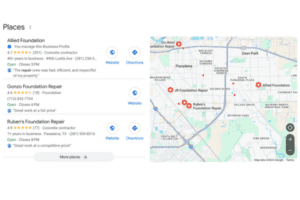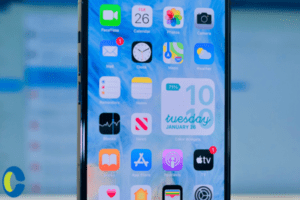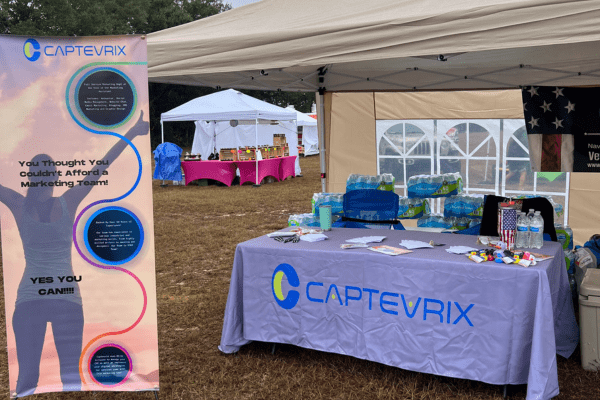The goal of any marketing campaign is to get people to notice and talk about your brand. You want to create buzz. What better way to do that than to surprise people? If you’re looking for a way to make a relatively low-cost splash for your brand, guerrilla marketing strategies might be for you.
A key element to a guerrilla marketing campaign is just that – surprise. You may have heard the term guerrilla marketing but knowing precisely what it is, how to pull it off, and whether or not you should try it may be a little elusive. We’re here to help shed some light on this innovative marketing technique and give you some things to consider before deciding if it’s the right move for your business.
Guerrilla marketing: what is it?
Guerrilla marketing is a form of marketing that is unconventional and aims to make a significant impact. It’s typically public, low-cost, and creative.
Inspired by guerrilla warfare, this marketing style is done in quick, “random” bursts. It’s not a drawn-out plan that lasts for weeks or months. There’s not really a right or wrong way to do it, as long as it’s creative and relevant to your brand. There are plenty of benefits and a few common pitfalls to avoid. At its heart, guerrilla marketing is about creatively grabbing the attention of people and drawing attention to your brand.
Many companies use environmental features that are already there, such as street drains, crosswalks, lampposts, benches, etc. Some companies have even used statues.
Guerrilla marketing campaign for the movie It, they used a visual cue of a red balloon from the famous movie and book by Stephen King. This technique’s cost was next to nothing but for fans of the movie/book, it’s a visually compelling ad.
An ad for Mr. Clean is an ad that uses a crosswalk to showcase its cleaning products/
These are just a few of many examples of guerrilla marketing campaigns. Companies and brands of all sizes can and do use this type of marketing as a strategy. It can be a great way to make an impact for a relatively low cost. Here are some things to consider before heading to the drawing board:
Executing a guerrilla marketing campaign – what works and what to watch out for:
We’ve already established that done well, a guerrilla marketing campaign can grip the attention of potential customers and create awareness about your brand.
When you begin to conceptualize a campaign, keep these things in mind:
- Relevance – Shock value is a valuable element in guerrilla marketing. However, you want to make sure it’s related to your brand and people who see it can easily make the connection between the ad and your business. It’s okay to be shocking, just make sure it’s related to what you do or make.
- Additionally, it’s a good idea to make sure that your company’s name or logo is visible somewhere if people look for it. Your logo or name doesn’t need to take center stage, just so long as people know who is responsible for the campaign.
- Cost – One of the hallmarks if guerrilla marketing is that it’s low cost – or lower cost than a longer term marketing campaign. It’s a good idea to budget and make sure the cost will be worth it to your company. Using materials and products that your brand already has on hand or finding ways to creatively use features already present – such as the It movie campaign example above – are good ways to keep costs down.
- When considering costs, don’t forget to calculate the cost of effort and time. Guerrilla campaigns require effort to execute. Before executing your plan, make sure that it’ll be worth any effort put into pulling it off.
- Reach & metrics – Guerrilla marketing campaigns are not targeted. The goal is to reach as many people as possible. This is why guerrilla marketing campaigns are best done in public places where they’ll be highly visible to a large amount of people. Unlike traditional marketing campaigns, there’s no way to control or influence who sees your ad. You can decide where to pull off your ad campaign and can strategize accordingly, but at the end of the day, who sees your guerrilla marketing ad is up to chance.
- Another thing to consider when deciding if this strategy is right for you is that there’s no way to collect data or metrics. There’s not a concrete way to gauge how successful or unsuccessful your ad was. An uptick in business or engagement could be because of the guerrilla campaign – or it could be due to a number of other factors. Even if your campaign goes viral, there’s still not a reliable way to collect metrics and data surrounding the event.
- Connotations – A final consideration is to be aware of current events, possible misinterpretations, and public safety. Your ad campaign should never put the people in danger or create safety hazards.
An example of guerrilla marketing gone wrong is the Boston bomb scare from 2007. Turner Broadcasting decided to run a guerrilla campaign for a TV show it produced by placing small boxes on street lights and other fixtures around the city. The campaign happened shortly after the Boston Marathon bombing and the ads caused citywide panic that led to authorities shutting down major parts of the city thinking that there was another bomb attack.
Though the campaign was executed in 10 different cities, going ahead with this particular campaign in Boston so soon after a tragedy was probably a mistake. While it’s not always possible to know every potential repercussion or interpretation of your campaign, it’s best practice to make sure you’re aware of any possible dangers and consider public safety.
Guerrilla marketing campaigns can be a great way to engage the public and create awareness of your brand. It can help people see your brand in a new light and create buzz about your brand or a new product or service. Guerrilla campaigns can be fun, low cost ways to get your name out there. When deciding if this advertising method is right for you, consider the cost, clarity, and ramifications. And if you do decide to do a guerrilla campaign, have fun with it and wow your audience with a great campaign!















